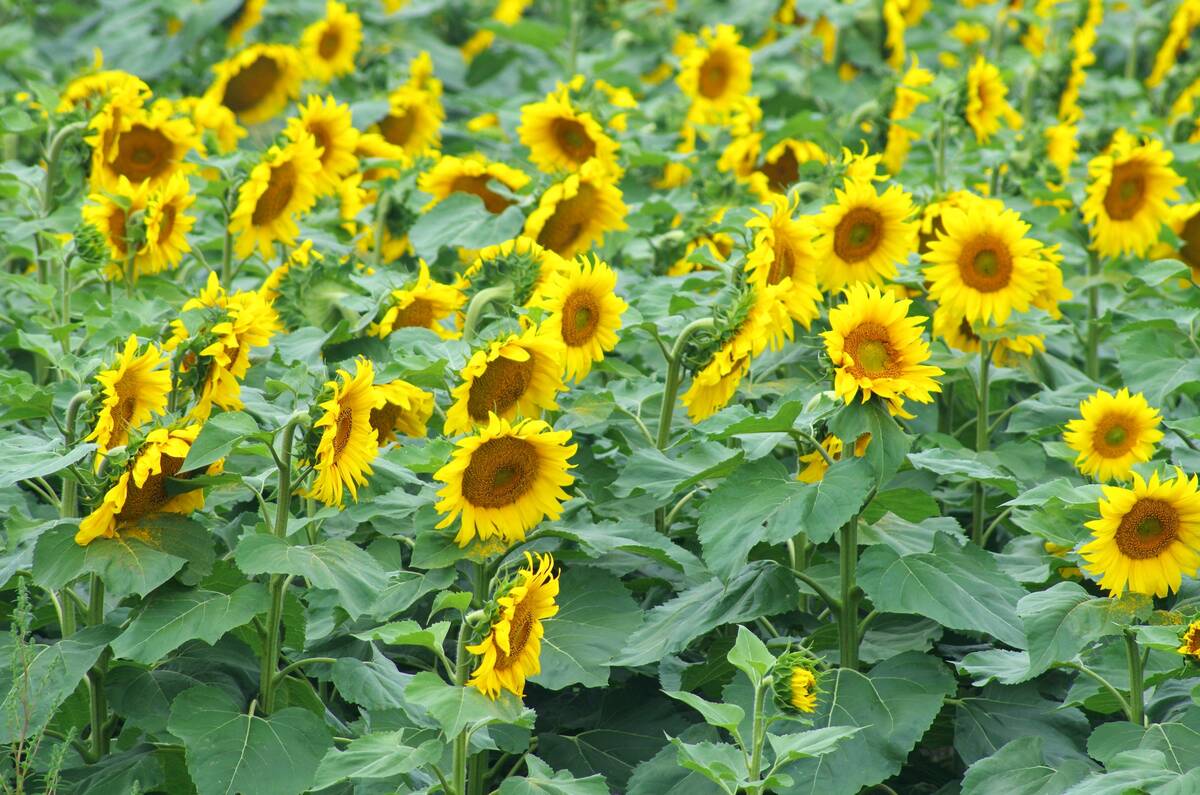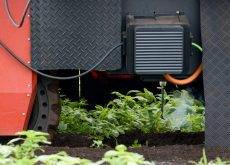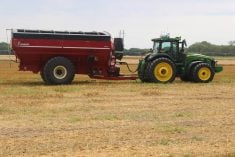The Western Producer will be checking in with farmer and agronomist Steve Larocque of Morrin, Alta., this growing season about his family’s first year experiences in controlled traffic farming.A Nuffield Scholarship trip to Australia convinced Larocque of the merits of reducing soil compaction in grain production. He observed dramatic yield increases on Australian farms that used reduced compaction strategies compared to neighbouring, conventionally operated land. This year, the tractor and drill have needed modifications to align them to run in repeatable tracks. The tractor wheels were modified and the Concord drill was narrowed from 40 to 30 feet. An offset hitch was added to allow inter-row seeding and the seed opener was removed from the tram line.MORRIN, Alta. – Mitch and Sam Currie and I are modifying our farm equipment to begin controlled traffic farming in 2010.After the tremendous benefits I documented on my overseas travels,compaction strategies compared to neighbouring, conventionally operated land. This year, the tractor and drill have needed modifications to align them to run in repeatable tracks.The tractor wheels were modified and the Concord drill was narrowed from 40 to 30 feet. An offset hitch was added to allow inter-row seeding and the seed opener was removed from the tram line.I felt there was no time like the present to begin controlled traffic farming in our heavy clay soil. Thankfully, the in-laws were keen enough to see it through and we are now at the final stages of completion.First came the modification of the four-wheel drive tractor. We changed it from a dual wheeled tractor to a single wheeled unit running on the outside rims.To do this, we needed to understand the machine’s load rating and how that would be affected.We had 23.1-34 bias ply tires with a load rating of 7,500 pounds per tire at 18 lb. per sq. inch. The four-wheel drive weighs 30,000 lb. wet so we didn’t have to buy new tires.Ideally, we could run radial tires to help carry the load, reduce tire pressure and smooth out the ride. However, our budget doesn’t allow for this. We have to match the wheel widths on the tractor, sprayer, air drill, air tank and combine so they will stay inside each other’s wheel track.By matching the wheel widths on each piece of equipment, we can bring our area of compaction down to just 16.6 percent of the field.The original plan was to have 10 foot centre-to-centre tire widths so we would only have to modify the tractor and back axle on the air tank. The sprayer, combine and front axle of the air tank were already on 10 foot centres.After some head scratching, we realized we could get down to a width of only 10 feet, three inches with our four-wheel drive because we couldn’t bring the outside rims in more than seven inches.The consensus was to go with the 10 foot, three inch centres on the four-wheel drive. The other equipment tires would fall inside this space and 1.5 inches per side was nothing to sweat about.The Steiger’s outboard planetaries made the modifications more difficult than they would be with a John Deere, which has inboard planetaries.Inboard planetaries have axle extensions that can be bolted on, allowing you to run on the inside rim, which is more structurally sound than the outside rim.Running on the outside rim of an outboard planetary system meant that we had to cut the spacers and weld the rims together.We removed the tires, rims and spacers and had them sandblasted. Sam welded the stress fractures and cracks in the welds and cut four spacers down to seven inches to fit in between the rims for added stability.The six bolts on each rim were cut down to 26 inches, rethreaded with a new nut welded on one end. We used these bolts to pull the rims tight so Sam could begin welding the two rims together. Once the welding was completed, each new rim was painted Steiger green.The next step was to put the four new rims back on the planetaries after replacing the seals and finish painting the rims while they could be spun on the hub. We left the calcium out of the tires when they were remounted for two reasons: the tractor is fairly well ballasted from the factory and we might have to make a quick tire change if things go wrong.After an arm-strong torque on the wheel nuts with a four-foot snipe, the four-wheel drive modification to singles was complete.Steve Larocque is an agronomist, farms near Morrin, Alta., and operates Beyond Agronomy. He can be reached at steve@beyondagronomy.com or 403-321-0181. His website is www.beyondagronomy.com.
Read Also

Bird repellent gets emergency approval for sunflowers
Bird repellent gets emergency approval for sunflowers
















